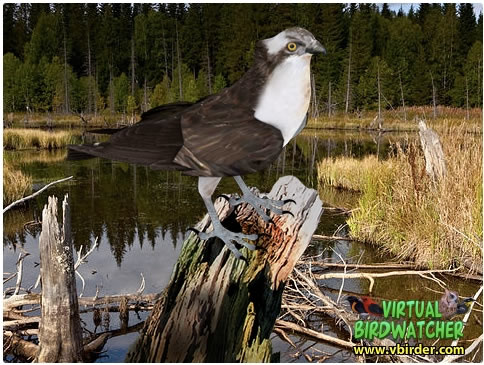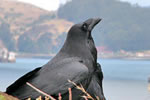Description |
The Osprey, one of the most widespread raptors in the world, is the most common coastal raptor. Measuring about 24 inches in length, the Osprey is mostly brown with a white head, throat, and underparts. The Osprey has a characteristic brown stripe that runs from the bill, through the eye, to the back. The yellow eyes are clearly visible from close range. In flight, the Osprey appears more white than brown. Males and females are identical. |
| |
Diet |
| The Osprey is a fish specialist. It dives feet first into the water to catch fish. Its feet are specially adapted to grip slippery fish. |
| |
Habitat |
| Lakes, rivers, marshes, sea shores, estuaries, bays, lagoons. |
| |
Range |
| The Osprey is found on every continent except Australia. In North America, it breeds throughout Canada and along both coasts. Large numbers of breeding birds can be observed in the Chesapeake Bay Region and throughout much of Florida. In the west, the Osprey breeds inland to Washington, Oregon, Wyoming, Idaho, and Montana. Scattered pairs may breed along large waterways throughout the United States. Wherever they are found, Ospreys are very conspicuous and build large, bulky nests atop telephone poles, platforms, man-made structures and dead trees. In some places, such as the Gulf Coast of Florida, dozens of Osprey pairs may breed within a single mile. Ospreys may be found throughout North America during migration. |
| |
Status |
| Osprey populations were decimated in the 1950’s and 1960’s by increased use of the pesticide DDT. Populations began to recover after DDT was banned in 1972, especially along the coasts. Populations, however, are still recovering in the interior of the United States. |
| |
 |
|















